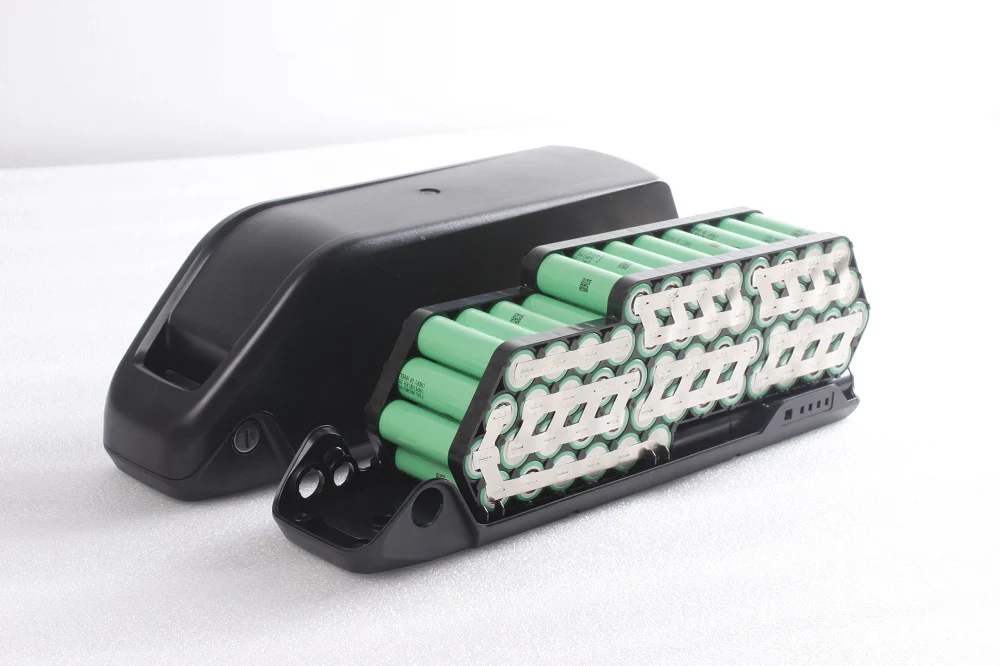Batteries
If the electric motor is the heart of an e-bike, the batteries are the lungs. A rechargeable battery supplies electrical energy to the motor.
Basic Components
An electric bike includes all the standard bicycle parts such as:
- Wheels
- Tyres
- Gears
- Brakes
In addition to these, e-bikes have a motor and battery
E-bike batteries
- E-bike batteries are made up of large numbers of cells connected together and packed into a (usually removable) casing.
- The batteries are usually lithium-ion, the same as used in phones, laptops and electric cars.
- The voltage of battery packs varies - higher voltages drive the motor faster.
- Larger battery packs have higher capacity, so you'll get more distance between charges.
- Modern battery chemistry gives lots of energy for a given weight, but e-bike batteries are still a significant extra weight.
Charging
- E-bike batteries are charged from a normal mains supply.
- A full charge may take anything from a couple of hours to overnight depending on battery capacity.
- Charging to 80% takes a lot less than 80% of the time - batteries charge more slowly as they reach full charge.
- Always use the manufacturer's supplied charger
- Check the battery regularly for swelling, damage or bad smells.
User Interface
E-bikes come with a display and controls, usually located on the handlebars or the frame. These provide key information and allow you to adjust settings:
- Display: Most e-bike displays will give you an indication of the percentage of charge remaining. How much distance that is varies wildly but after a few riders you'll know how far you can go on a certain percentage.
- Controls: Using a lower level of assistance means that your battery will last longer on a single charge.
Many electric bikes also have a dedicated mobile phone app which will display battery charge status, speed and other data.
Key takeaways
- Additional components: E-bikes feature an electric motor and a battery, which can be integrated into different parts of the bike, such as the frame or wheels.
- Sensors and computer control: E-bikes are equipped with sensors that detect your pedalling speed or effort, and the computer adjusts the motor's power to assist you.
- Adjustable pedal assistance: Riders can choose different levels of motor assistance, from no or minimal help to significant support. Beyond the UK legal limit the rider gets no help.
If you'd like to find out more, read our comprehensive guide to batteries.

